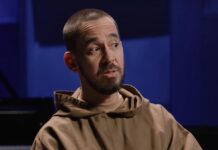Police have released video from the scene of Prince’s April 2016 death, and a video of Prince visiting his doctor to get drugs the day before he died. USA Today recapped the video and interviews from the death scene.
There are five videos containing close-ups of Prince’s dead body, sprawled on his back on a Persian-style rug at the entrance to the elevator at Paisley Park. The video seen below though from TMZ does not have footage of his body, as most of the media have chosen not to show this.
He was slightly on his left side, his left arm on the floor, his right arm across his midsection. His left arm and right ankle had EKG cable patches from lifesaving techniques used by paramedics. His right wrist was wrapped in blue tape. He was shoeless, dressed in black and grey workout-style clothes with black socks, and a black knit cap covered his head and hair.
Prince’s laptop:
A report by Sgt. DeWitt Meier described what he saw and did when he arrived to help with the investigation of the scene on the day Prince’s body was found. On April 21, 2016, Meier saw an Apple laptop sitting on the dresser in Prince’s bedroom, but he didn’t search it or seize it. He saw no cellphones.
The next day, Meier says, after numerous pill bottles were found throughout Paisley Park, he learned that Prince and his staff communicated by telephone or email only, not cellphone.
“I regretted not taking the computer by the bedside, as I believe that this contained conversations between his staff and (Prince) about medications possibly,” Meier wrote.
Only then did he direct someone to get a search warrant for the laptop, which by then had been placed in a locked office. When the search warrant was finally executed five days after Prince’s death, a locksmith had to be called to open the door and retrieve it.
Interview with Kirk Johnson:
He was Prince’s friend from the 1980s, a sometime drummer for him, best man at his first wedding, bodyguard and estate manager. But he told investigators even he did not always know what was going on with Prince.
“He’s really, he’s always been private so I mean even from me he would keep me at a
distance so you know, I respected that, respected his privacy,” he said in his interview with Det. Chris Wagner.
Was Prince addicted to painkillers, Johnson was asked.
“He never told me that but that’s what I’m finding out,” Johnson said. “I mean and l just figured that out after that time we had to land the plane that this is what…it started to all make sense through just his behavior sometimes and change of mood…That’s why I took the initiative and said let’s go to my doctor because you haven’t been to the doctor, let’s check it all out.”
The day before his death, Johnson took Prince to his longtime local doctor, Michael Todd Schulenberg, who also was interviewed by investigators. On that day, Schulenberg saw Prince and ran some tests and prescribed other medications to help him. A urinalysis came back positive for opioids.
Schulenberg prescribed the opioid painkiller oxycodone to Prince on April 14, 2016, but put it under the name of Johnson. Two years later, on Thursday, Schulenberg agreed to pay $30,000 to settle a federal civil claim for knowingly writing a prescription in someone else’s name, which violates the Controlled Substances Act.













